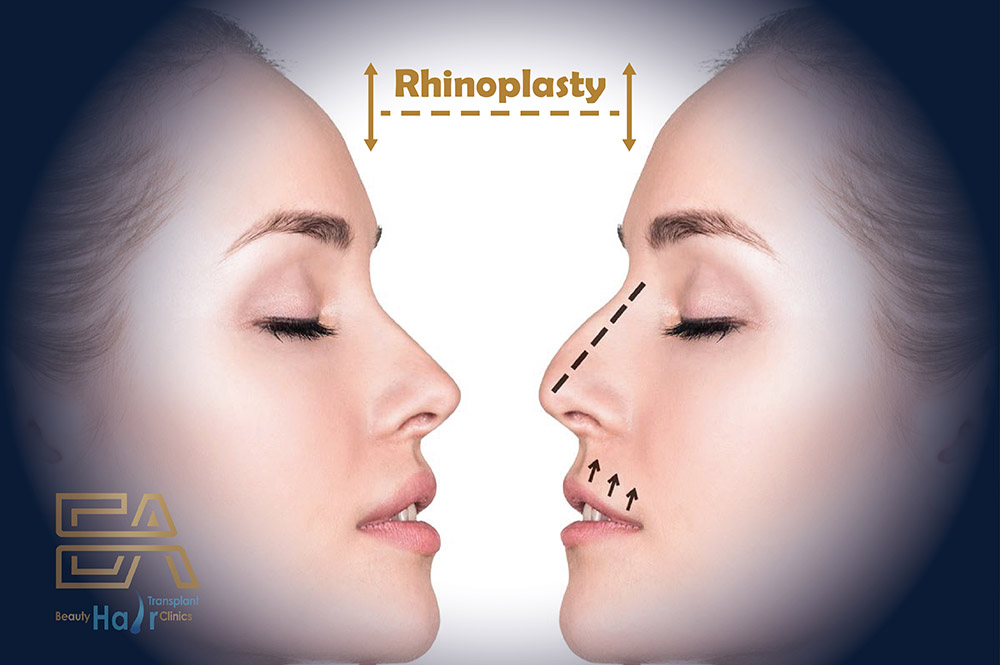Rhinoplasty Surgery
Rhinoplasty Surgery
A rhinoplasty is a surgical procedure that alters the nose’s shape or improves breathing. It is known to be a low risk operation and can be performed by skilled plastic or ear, nose, and throat surgeons.
Prior to having a rhinoplasty, both the patient and the doctor must specify the alterations they want made to the patient’s nose. After comparing the nose, cartilage, facial structure, and skin type in accordance with the patient’s desires, the doctor will begin preparing the procedure.
How Should The Nose be Ideal?
The ideal nose should be balanced, seem natural, and fit the face. It should also aid in natural breathing. However, the idea of the perfect nose varies from person to person and from region to country. The components of the nose must complement one another and give the face type a nose that looks appropriate. This balance and a nose that looks natural are the goals of rhinoplasty.
When Should A Rhinoplasty Be Performed?
If you are not happy with the shape or size of your nose.
If your nose doesn’t match your face, is too big, too little, or both
If you experience respiratory issues.
If your nose is too large and strongly curled.
If you had an accident or congenital issues.
You should get rhinoplasty for a healthy life and a better appearance.

Deformities and respiratory issues are the two main factors that trigger cosmetic nose surgery. Genetic causes are typically to blame for genital malformations. However, abnormalities can occasionally result from trauma, accidents, or later malignancies.
Congenital Problems:
A person’s nose may be badly formed due to genetics, which makes breathing difficult. In these situations, which are typically brought on by the family, the person may wish to alter the form of their nose in accordance with accepted standards of beauty. People who are unhappy with their noses might see nose aesthetic specialists.
Problems Caused By Accidents: The contour of the nose might deteriorate as a result of trauma and accidents. Falling, specifically, during childhood can harm the nasal bone and have a negative impact on its growth. Breathing difficulties and abnormalities can result from untreated nasal bone fractures. For persons who have experienced trauma, accidents, or who are engaged in combat sports, the contour of the nose may deteriorate in adulthood. Only the nasal tumor and the procedures used to remove it can result in malformations in the nose, despite their rarity. In certain situations, rhinoplasty might be required.

Expectations: You should talk to your surgeon about your surgical goals and expectations. Your physician will advise you on how to proceed with rhinoplasty and potential outcomes.
Medical History
The reason and intent behind the surgery are among the most crucial details that your doctor has to be aware of. You should decide what modifications to make to your nose and what issues you don’t like. Your medical history is another crucial factor. You should tell your doctor about the medications you use, whether you have nasal congestion, and any previous illnesses you may have had.
Physical Examination: Your doctor will run a few laboratory tests ahead of the procedure. Your doctor will also look at your physical qualities and general health before deciding whether or not you can have the procedure and what alterations can be made to your nose. This is done after looking at the inside and outside structure of your face.
Your doctor will do various laboratory tests prior to the surgery. In addition, after assessing the internal and external structure of your face, your doctor will look at your physical traits and general health to decide whether you can have the procedure and what alterations can be done to your nose.
Pictures: Before and after the surgery, your nose is photographed from different angles. This way you will have the opportunity to compare your appearance before and after the operation.
Nutrition and Drugs
Avoid taking aspirin and ibuprofen two weeks prior to the procedure as they will cause more bleeding. Additionally, you must stop smoking because it slows down the healing process and raises the possibility of infection.
Under general anesthesia, rhinoplasty typically lasts 1-3 hours. It can be a little bit longer in some situations. There are two distinct procedures for rhinoplasty: open and closed.
Opened Rhinoplasty: The skin is removed during this procedure by making a little incision near the base of the nasal openings. The surgeon has a wider field of view thanks to this approach. Additionally, patients who have significant deformities or a history of cosmetic surgery use this approach.
Closed Rhinoplasty: The cracks in this technique are inside the nose holes. There is no chance of externally visible suture scars in this approach, despite the restricted viewing angle. The recovery period is also comparatively quicker, and there may be fewer bruising and edema than with opened wounds. Rhinoplasty.


